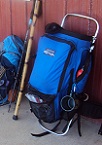A productive day across the map, despite a few bumps here and there. Including one that was self-imposed. You can see the map for details, but if I was a clever and creative journalist, the report would begin this way:
There is no darker place than the Arafura Sea before dawn on a moonless night. The soldiers of the 3rd Australian Division and the combat engineers of II Corps awakened in that darkness. Truthfully, few had slept, and those fitfully.
These men were aboard American transports where the galleys traditionally served steak and eggs on the morning of an amphibious operation. Even though these soldiers were not veterans of any foreign campaigns, they had served so long that they well knew they had better eat, even if their stomachs were fluttering madly, like a butterfly caught in a spider web.
At 6:30 a.m., the orders came to board the landing craft: Higgins boats, amtracks, and others. The men were calmly resigned, partly because this would not be a "hot" landing. They were coming ashore to reinforce the American 2nd Marine Division. What could go wrong?
What could go wrong?
For starters, the weather. At 6:45 a.m., a squall line developed over the southern Arafura Sea. The sky grew dark and jagged lightning bolts seared the horizon. Aboard the USS Essex, Raymond Spruance huddled with the ranking meteorologist. "Sir," the weatherman began calmly but with the weight of experience adding emphasis to his words, "there is no choice here. This storm could kick up 35 foot waves. We've got to scrub the landings and try again tomorrow."
To everyone's surprise, Spruance simply and calmly replied, "Okay."














 " - BBfanboy
" - BBfanboy

